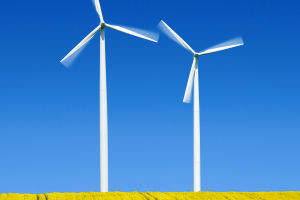Before the era of jet airplanes, aircraft relied on piston engines powered by fuel combustion to propel forward, with spinning propellers generating thrust.
However, this piston-driven design faced limitations in achieving higher speeds, prompting the exploration of alternative propulsion methods.
The inception of jet propulsion traces back to Henri Coanda's pioneering work showcased at the Paris Exhibition in October 1910. Coanda's revolutionary design featured a 50-horsepower engine driving a fan to expel air backward, complemented by an additional combustion chamber to amplify thrust through gas expansion in the tailpipe. This marked a pivotal moment in aviation history, laying the groundwork for the development of jet-powered aircraft.
Yet, progress came with challenges. In December of the same year, Coanda's inadvertent triggering of the aircraft's ignition mechanism led to a harrowing moment as the plane veered towards a city wall during a routine inspection. Displaying quick thinking, Coanda managed to navigate the aircraft into the air briefly before crash-landing due to his limited piloting experience. Fortunately, he emerged unscathed, inadvertently becoming the first person to pilot a jet-powered aircraft.
The principle of jet propulsion relies on Newton's third law of reaction. At the engine's forefront lies an air compressor, typically comprising 7 to 9 stages. As the compressor rotor spins, it draws in external gas, progressively compressing it through multiple stages until reaching significantly heightened pressure levels. Subsequently, the compressed gas enters the combustion chamber, where electric ignition and fuel injection initiate combustion. Fueled by oxygen within the gas, combustion generates expansion, propelling the gas backward.
Following combustion, the gas passes through a turbine situated behind the combustion chamber. The turbine's rotation, facilitated by a turbine shaft encircled by blades across 7 to 13 stages, further compresses the gas, significantly elevating its pressure. Finally, the pressurized gas is expelled through the tail nozzle, creating a reactive force that propels the aircraft forward.
The evolution of jet propulsion has revolutionized aviation, enabling unprecedented advancements in speed, efficiency, and exploration. Modern jet engines feature advanced technologies, including multi-stage compressors and turbines, sophisticated fuel injection systems, and precise control mechanisms, enhancing performance and reliability. The development of supersonic and hypersonic aircraft has pushed the boundaries of jet propulsion, opening new frontiers in aerospace engineering and exploration. These cutting-edge aircraft utilize innovative designs and materials to achieve incredible speeds, offering immense potential for scientific research, commercial travel, and national defense.
The journey from Coanda's pioneering concept to modern jet propulsion represents a remarkable chapter in aviation history. Through ingenuity, perseverance, and technological innovation, aviation pioneers have transformed the way we fly, ushering in an era of unprecedented speed, efficiency, and exploration. As we look to the future, the legacy of jet propulsion continues to inspire new generations of engineers, pilots, and innovators to push the boundaries of what is possible in aviation and beyond.
The evolution of jet engines continues to be driven by innovations in materials science, aerodynamics, and propulsion systems. For instance, the development of advanced composite materials has enabled the design of lighter and more fuel-efficient engine components, contributing to enhanced performance and reduced environmental impact. The quest for greater efficiency and sustainability has led to research into alternative propulsion technologies such as hybrid-electric and hydrogen-powered engines. These emerging technologies hold the promise of further revolutionizing air travel by offering cleaner and more sustainable propulsion solutions.


